Published on July 11, 2024 8:27 PM GMT
[Radically updated with many new entries around 07/10/24]
Epistemic status: The List has been tested in the real world by me (with mixed results) and extensively checked for errors by many commenters. The Background section is mostly speculation and anecdotes, feel free to skip to The List once you understand its reason for existence.
tldr: This is a curated list of observable details about a person's appearance that indicate something useful/surprising about them. Ideally, studying this list will be an efficient way to cultivate more insightful observational/abductive abilities, approaching the fictional example of Sherlock Holmes. Please contribute in the comments section after reading the Rules.
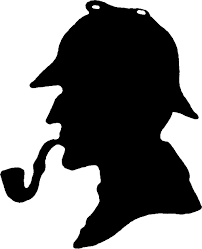
Background
Is it possible to develop observational abilities comparable to Sherlock Holmes?
Sir Arthur Conan Doyle's fictional detective has many enviable skills, including mastery of disguise and some expertise at unarmed combat, as well as generally being a genius, but we will focus primarily on his more well known observational power. Though Holmes is often described as a master of logical "deduction," this power is better described as (possibly superhuman) abduction. That is, Holmes perceives tiny details that many people would miss, then constructs explanations for those details. By reasoning through the interacting implications of these explanations, he is able to make inferences that seem impossible to those around him. The final step is actually deductive, but the first two are perhaps more interesting. Holmes' ability to perceive more than others does seem somewhat realistic; it is always possible to actively improve one's situational awareness, at least on a short term basis, simply by focusing on one's surroundings. The trick seems to be the second step, where Holmes is able to work backwards from cause to effect, often leveraging slightly obscure knowledge about a wide variety of topics.
I spent several of my naive teenage years trying to become more like Holmes. I carefully examined people's shoes (often I actually requested that the shoes be handed over) for numerous features: mud and dirt from walking outside, the apparent price of the shoe, the level of wear and tear, and more specifically the distribution of wear between heel and toe (hoping to distinguish sprinters and joggers), etc. I "read palms," studying the subtle variations between biking and weightlifting calluses. I looked for ink stains and such on sleeves (this works better in fiction than reality). I'm pretty sure I even smelled people.
None of this worked particularly well. I did come up with some impressive seeming "deductions," but I made so many mistakes that these may have been entirely chance.
There were various obstacles. First, it is time consuming and slightly awkward to stare at everyone you meet from head to toe. I think there are real tradeoffs here; you have only so much total attention, and by spending more on observing your surroundings, you have less left over to think. Certainly it is not possible to read a textbook at the same time, so practicing your observational techniques comes at a cost. Perhaps it becomes more habitual and easier over time, but I am not convinced it ever comes for free.
Second, the reliability of inferences decays quickly with the number of steps involved. Many of Holmes' most impressive "deductions" come from combining his projected explanations for several details into one cohesive story (perhaps using some of them to rule out alternative explanations for the others) and drawing highly non-obvious, shocking conclusions from this story. In practice, one of the explanations is usually wrong, the entire story is base on false premises, and the conclusions are only shockingly wrong.
Finally, correctly constructing explanations for small details of another person's appearance usually requires shared life experience and context. You might recognize a pin on their backpacking as referencing a particular fandom (how else, but by watching the same show yourself?). You might identify the shoes clipped to that backpack as for climbing (how else, but by going climbing yourself at least once?). You might recognize their accent as Midwestern (how else, but having friends of acquaintances from the Midwest?). So it seems that becoming like Holmes may require accumulating more life experience than others: exploring instead of exploiting, switching careers often, spending time in many different social strata, playing many different sports, rotating your musical and entertainment choices constantly, etc. Perhaps also traveling and living in many different places, though it is perhaps notable that even Holmes confines himself to deep knowledge of life in London. The problem with this strategy is that it is not clearly possible to increase one's life experience far beyond the norm (at least, for one's age group; and it seems that older people run some risk of lacking shared context with younger people). Life experience is somewhat limited bandwidth. I do not believe it is like electrical engineering, where one can learn drastically more about it by reading many textbooks and building circuits instead of passively absorbing basic facts about how the outlets on the wall work and what an HDMI cable is from life experience. You cannot really learn what a climbing shoe looks like by reading (non-picture) books (though @jenn has claimed that reading autobiographies specifically has helped her make some surprising observations). And though it is in principle possible to watch many, many more popular shows than an ordinary person, you cannot watch all of them, and it is basically not worth the time. Also, you'd probably be cluttering your mind with largely useless knowledge. Or as Holmes says (thanks to @Shankar Sivarajan for the reference):
"I consider that a man's brain originally is like a little empty attic, and you have to stock it with such furniture as you choose. A fool takes in all the lumber of every sort that he comes across, so that the knowledge which might be useful to him gets crowded out, or at best is jumbled up with a lot of other things, so that he has difficulty laying his hands upon it. Now the skillful workman is very careful indeed as to what he takes into his brain-attic. He will have nothing but the tools which may help him in doing his work, but of these he has a large assortment, and all in the most perfect order. It is a mistake to think that that little room has elastic walls and can distend to any extent. Depend upon it there comes a time when for every addition of knowledge you forget something that you knew before. It is of the highest importance, therefore, not to have useless facts elbowing out the useful ones."
-Sir Arthur Conan Doyle, A Study in Scarlet
It is this final problem that I hope to address here, by collecting in one place many observable details that indicate useful (or at least impressive sounding) information about others (the explanations).
Design Principles
As increasingly many people contribute suggested entries, I have had to curate the list's content. In particular, the list would be become useless if it attempted to include the meaning of every conceivable symbol or a the origins of every clothing item - in the limit, nearly everything on the internet is probably distantly useful for some kind of inference.
My guiding principle when judging what to include is Shannon's information theory. The most valuable entries apply to ~50% of people because this guarantees you get to use them a lot (even when the entry doesn't apply, that tells you something surprising as well). Technically, this maximizes the entropy of the signal. Since creating the list, I have also had many opportunities to attempt abductions. At the time of writing, it is still the case that not a single entry applies to many people, (arguably) underscoring the need to focus on frequently occurring details rather than ones that tell you a lot when they do occur. It is pretty rare that I consciously notice a detail that seems "interesting" but isn't on the list, so it may be hard to find many more ~50% likely entries - on the other hand, it is very possible that my mind dismisses many details I don't know how to use.
The secondary principle is reliability. I try not to add any entries that seem likely to have alternative explanations, even if I do not have an alternative explanation in mind. Feedback from commenters has been helpful here when I slip up (and made me even more cautious about this).
For the fiendishly committed, resources providing hints that seem too unreliable or too low entropy to belong in the list itself are linked and suggested throughout (and will likely be collected as "further reading" in the future).
Rules
Please add your contributions in the comments. I will impose some basic requirements for what is promoted from the comment section to the post to maintain epistemic rigor and usefulness.
Rule 1: Do not post useless trivia or anything which is likely to become irrelevant in one year (pop culture, fandom symbols, etc.) unless there is a very compelling reason. Generally if it is not worth memorizing the top 10 examples of the general class that the observation/explanation comes from, do not post it. I am not interested in fandom symbols or transient fashion trends. I am interested in common religious symbology/garb and signs of athletic activities, particularly when those athletic activities imply applicable abilities (like competence in a fight or unusual speed on land or in water).
Rule 2: I will not promote anything unless I am reasonably confident it works. Either you should have used it yourself in at least a handful of cases (without a significant fraction of false positives) or you should link highly reliable sources that observation -> explanation. In either case, I will generally require at least one other commenter (possibly myself) to confirm that they have successfully applied the inference in real life. If something is particularly interesting, but I am not confident it is true, I will add it with the label [SPECULATIVE].
The List
The list is organized head to toe, as one might scan a person.
Linguistic cues are listed last, both because they are likely to be encountered last, and because I think they are less worth memorizing. There are simply too many regional accents to keep track of; I'll try to focus on cues with high surprisal.
Cauliflower Ear -> Combat Sports
Source: Me (Cole Wyeth)
Confidence: High
Relevant background: https://www.nationwidechildrens.org/conditions/cauliflower-ear

I trained MMA and particularly Brazilian Jiu Jitsu for many years. I encountered many people with cauliflower ear, usually former wrestlers or cage fighters. I believe it is common in boxers as well. I do not remember ever encountering anyone with cauliflower ear who did not have a history in combat sports of some variety (a nontrivial observation because I ran frequent intro classes with people who had no martial arts background, as well as many who did). I understand that this is usually a result of repeated trauma to the ear, and though serious swelling usually recedes, after enough instances the ear never really regains it original shape. It has been observed in these circles (slightly tongue-in-cheek) that if you see someone on the street with cauliflower ear, you probably shouldn't mess with them. It is of course also possible that some people have suffered blows to the ear for some other reason, or (if only one ear looks like this) perhaps one very traumatic blow, but I have never observed this.
Alternative explanations: @DAPuckett apparently has cauliflower ear from cold exposure.
Scope Bite -> Firing a Gun with a Scope
Source: Me (Cole Wyeth) with background from my brother (Ames Wyeth)
Confidence: High
Relevant background: https://www.wingtactical.com/blog/how-to-prevent-scope-bite/
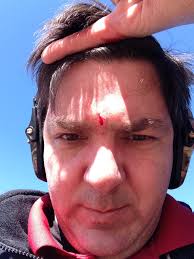
This happened to me, but I received generalized bruising (around the nose where my safety glasses rested) instead of a cut. Though this obviously implies there is some variance in the wounds, most images online look pretty similar and highly characteristic.
Broken Capillaries on Face -> Drug or Alcohol Use
Source: Me (Cole Wyeth)
Confidence: Low [SPECULATIVE]
Background: For various potential causes, see https://www.medicalnewstoday.com/articles/321387#treatment. For various skin problems caused by drug and alcohol use, see https://www.sciencedirect.com/science/article/abs/pii/S0738081X21000699?via%3Dihub
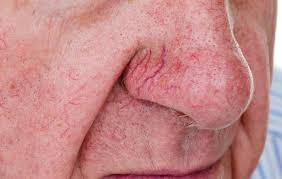
It is not guaranteed that the above image shows a result of alcohol. In general, causality seems hard to verify (though it seems consistent with my experience). which is why this remains speculative.
Collapsed Nose -> Cocaine Addict
Source: Ames Wyeth
Confidence: Mid-High
Background: https://www.thehopehouse.com/cocaine-addiction/related/cocaine-nose/

Though I've generally tried to include usable real-life photos for each entry, pictures of this condition are too graphic. In less extreme cases, cocaine use can cause nosebleeds and sniffling.
Teardrop tattoo -> May have been a Prisoner
Source: @jenn
Confidence: Low [SPECULATIVE]
Background: https://en.wikipedia.org/wiki/Teardrop_tattoo

According to @jenn :
teardrop tattoo right under the eye: this person killed someone or was in prison at some point, or want to pretend that that's true for them (e.g. if they're a soundcloud rapper from the suburbs). also see other prison tattoos
However, this tattoo seems to have various possible meanings - if you're interested dig into some of the links (insert most common trigger warnings), either way don't jump to conclusions.
Marks on Neck and Chest -> Violinist
Source: Ana
Confidence: Mid-High

Obviously, this should be interpreted that these specific marks imply someone might be a violinist. This has been confirmed by my friend Gennie (who says it's only likely to show up from intense practice or if you have delicate skin) and my friend Bella, who says that the position varies (she has one close to the one on the jaw in the picture but not the lower ones because she "had a good shoulder rest and didn't play baroque style").
Alternative explanations: Apparently cold can cause skin reactions too, though I have some doubts it would cause these precise patterns.
Lambda Symbol -> Lesbian
Source: One of my lesbian moms
Confidence: Mid-High
Background: https://www.cs.cmu.edu/afs/cs/user/scotts/ftp/bulgarians/lambda.html
Also appears along with various other queer symbols at https://www.dmu.ac.uk/events/pride/symbols.aspx
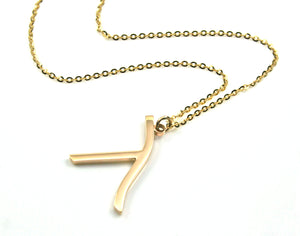
When used to represent lesbian identity, the lambda symbol usually seems to be used in combination with a pink or rainbow color scheme.
Ribbon Pin -> Raising Awareness
Source: Me (Cole Wyeth)
Confidence: Mid-High
Relevant Background: For classifications by color (~impossible to memorize but might be applied retrospectively) see https://www.thepinpeople.com/custom-products/awareness-ribbon-pins/custom-awareness-ribbon-pin-colors-and-awareness-ribbon-meanings/.
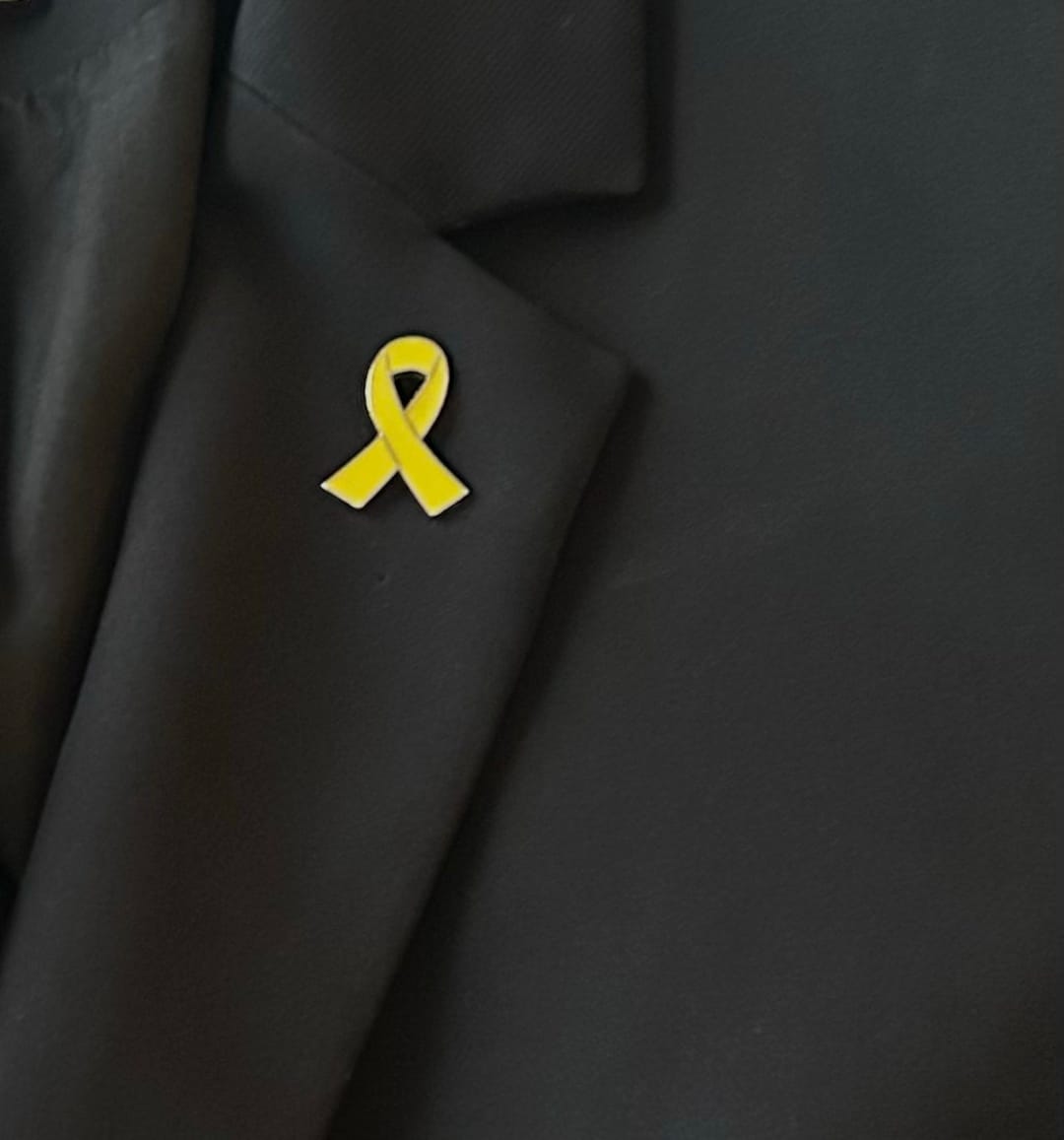
This symbol has been used to raise awareness for many causes from politics to medicine. I was inspired to add it to the list after observing a yellow ribbon pin on a conference speaker's shirt. I was actively looking for details that stood out, but I did not yet know how to use (to estimate the effective upper limit on the number of rules that might apply to the average person). At the end of his talk he presented a slide calling for the release/rescue of Israeli hostages in the Gaza strip (using the yellow ribbon symbol) so in principle I may have anticipated this with a more exhaustive list!
Patches on Cut-Off Vest -> In a Motorcycle Club
Source: Ames Wyeth
Confidence: High
Relevant Background: https://en.wikipedia.org/wiki/Colors_(motorcycling), see also https://en.wikipedia.org/wiki/Outlaw_motorcycle_club
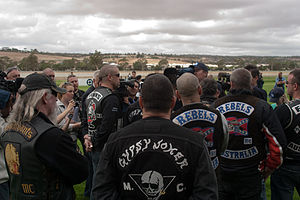
The first source describes an extensive amount of information that can be read from a biker's "kutte." I would be more confident in the details with some first-hand confirmation, but sources seem to agree on the basics. Note that not all motorcycle clubs are outlaw (this is indicated by a "1%" patch) and even the "outlaw" clubs might only be violating motorcycle club regulations and not real laws.
Semicolon Tattoos -> Faced/Faces Mental Health Challenges
Source: @jenn
Confidence: High
Relevant background: https://en.wikipedia.org/wiki/Project_Semicolon

indicates that someone is struggling with or has overcome severe mental health challenges such as suicidal depression. You see them fairly often if you look for them. i've heard that butterflies and a few other tattoos mean similar things, but you'll run into false positives with any more generic tattoos.
-Jenn
I have also observed this in real life.
Puzzle Piece Tattoo -> Supports Autism Awareness
Source: @jenn
Confidence level: Mid
Background: https://www.reddit.com/r/autism/comments/tcj5ak/question_about_puzzle_piece_tattoo/
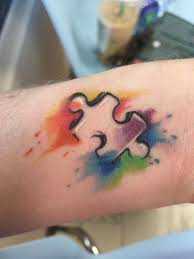
puzzle piece tattoo or jewelry: this person likely has an autistic child or close family member, and is not super up to date on the most uh, progressive thoughts on the topic. autistic people themselves are more likely to dislike the puzzle piece symbolism for autism
I have observed this tattoo in real life, but did not have a chance to confirm the meaning was as expected. Though it is well documented that this was once a symbol for autism, I have no reason to believe there are NOT other likely interpretations and would appreciate confirmation in the comments.
Neda Tattoo -> Eating Disorder Recovery
Source: A friend
Confidence: Mid-High
Background: https://lisettehoschek.com/2022/11/15/eating-disorder-recovery-tattoo-why-its-so-helpful/

This tattoo is literally NEDA's logo, so pretty confidently means this person has struggled with an eating disorder (or someone close to them has). Other elements may be incorporated into the tattoo.
Forearm bruising -> Archery
Source: nicbeans311
Confidence: Mid
Background: https://archery360.com/2019/10/30/how-to-not-hit-your-forearm-with-the-bowstring/

firing certain weapons can leave marks on a person's hand. from slide bite from glocks to garand thumb from the m1 garand. there are also forearm marks from archery if you're not wearing an arm guard.
a person also walks differently when wearing a weapon, their arm usually accommodates the space. a leather belt can show wear in the area where a badge might be repetitively attached and detached.
Though proper form can prevent this, apparently the string of a recurve bow will still bounce around an leave a red mark if no armguard is used.
Persistent Cut or Scar on Knuckles (Russell's Sign) -> Bulimia Nervosa or Anorexia Nervosa
Source: @rationalelf
Confidence: Mid
Relevant background: https://en.wikipedia.org/wiki/Russell%27s_sign
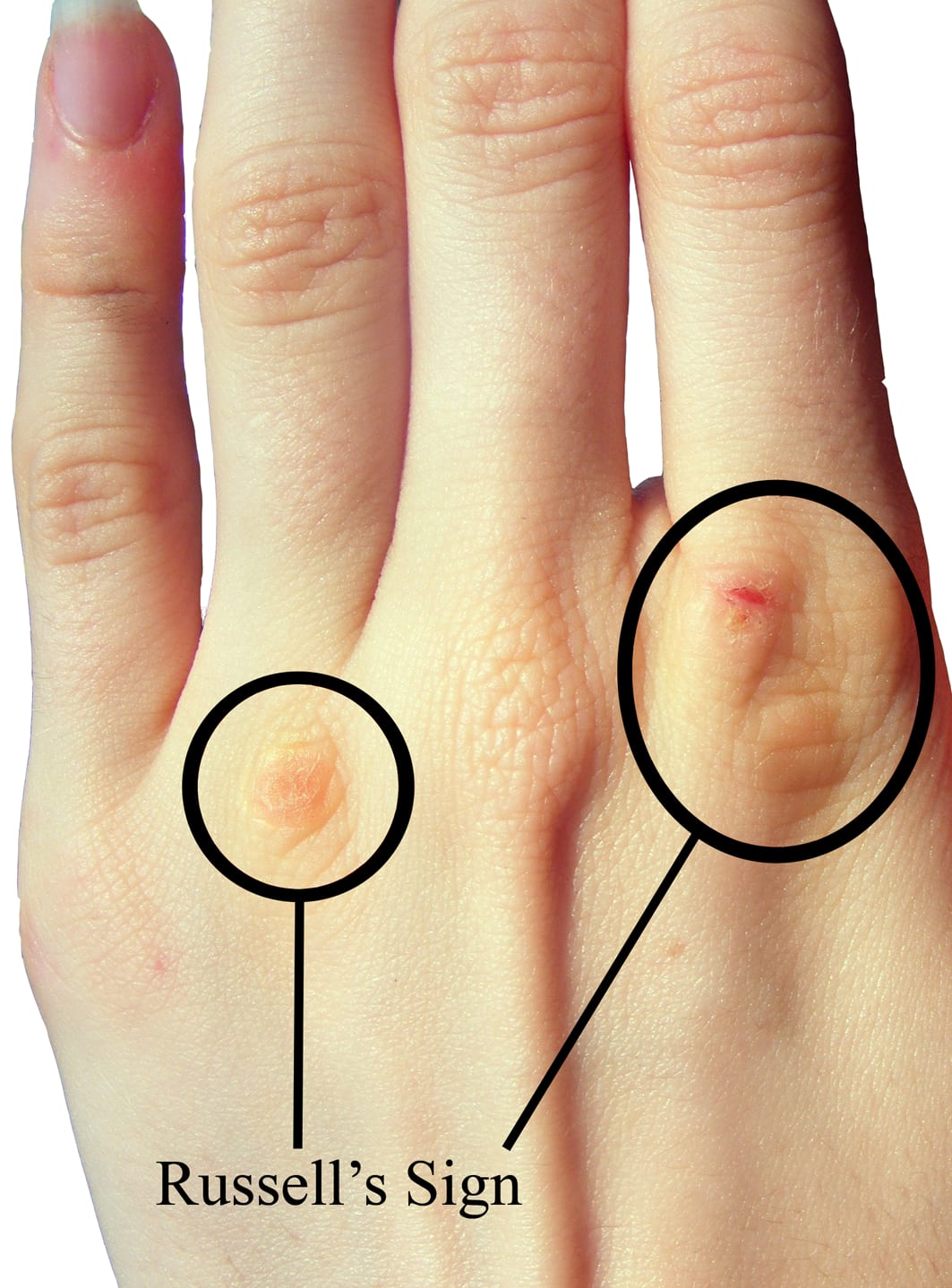
This scarring can result from using a finger to induce vomiting, so is a sign of an eating disorder. Obviously, knuckle scarring could also be a sign of e.g. boxing, but in that case is likely to occur on both hands.
The sign won't always appear; from Wikipedia:
Bulimics who are capable of "handsfree purging", or the induction of vomiting by the willful opening of the esophageal sphincter in a manner similar to belching, while contracting the stomach muscles, do not have Russell's sign.
Cartier LOVE Bracelet -> Wealthy Person in their Life
Source: Gennie
Confidence: Mid-High
Background: https://www.sothebys.com/en/the-cartier-love-bracelet-everything-you-need-to-know
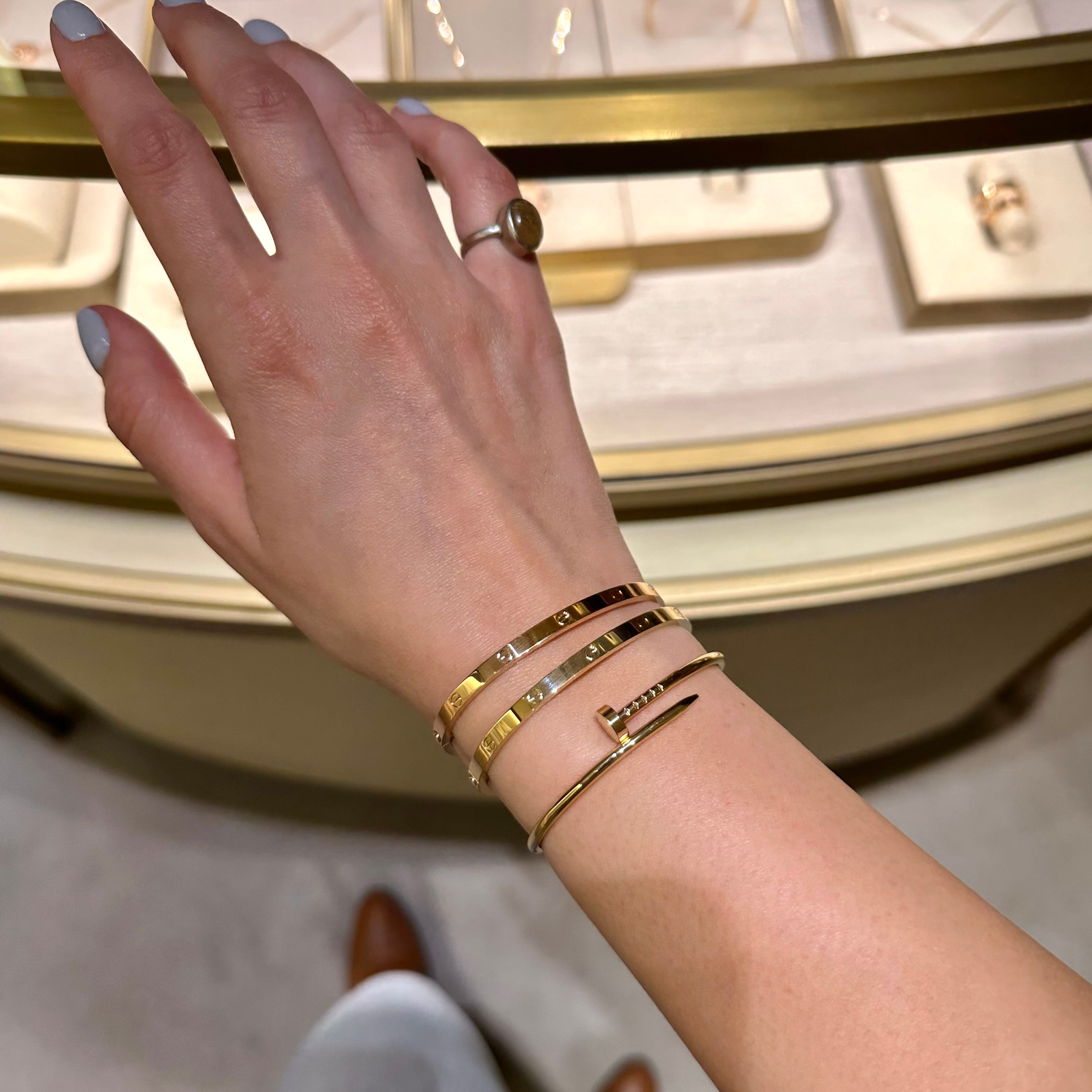
The top two bracelets are Cartier LOVE (the nail is also a Cartier motif). This collection is usually a gift from a loved one and runs in the thousands (the version with a diamond is in the tens of thousands). Since this usually comes as "permanent jewelry" and needs a special tool to attach and remove, someone who wears it probably doesn't routinely do any physical activity that would damage it (e.g. rock climbing or manual labor, though they probably aren't in the "manual labor" profession for obvious reasons).
More generally, I suggest familiarizing yourself with the major brands of fine jewelry. These seem to remain relatively stable over time - you should be able to determine the designer with a closer examination (I think that an explicit brand name will typically appear but will be subtle), or at a glance if you're familiar with the motif's[1] of their collections. These seem too transient and low entropy to be worth memorizing for most people, but some basic knowledge of common motifs may be useful if you anticipate moving in upper class circles.
T Motif on Jewelry -> Wealthy
Source: Gennie
Confidence: Low-Mid
Relevant Background: https://www.tiffany.com/jewelry/shop/tiffany-t/?omcid=ppc_google_TIFFANY_WJ_USA_NOBRID_FJW_LOW_OGOING_EC_PEMA_GPMA_CRD_USD_N_Entry_&mkwid=%7Cpcrid%7C%7Cpkw%7C%7Cpmt%7C%7Cpdv%7Cc%7Cmtid%7C744dpc50313%7Cslid%7C%7Cproductid%7C%7Ctargetids%7C%7Cgroupid%7C%7C&gad_source=1&gclid=CjwKCAjw4ri0BhAvEiwA8oo6F1oX3vmWnnV6jIVzNa6pdnw2XgmKSmE7JxpH2LyQsPK627S_54A6iBoCEqsQAvD_BwE&gclsrc=aw.ds
The Tiffany T motif appears in various forms (google it or see the background link for an up-to-date list of offerings). This is a fine jewelry brand so will typically cost at least thousands. I have attempted to apply this entry once in real life, but I got it wrong, causing me to choose a low confidence (it was probably an imitation with a more ornate T, this motif always uses very straight lines though sometimes the two T's fuse at the top and there may be embedded diamonds). For other common motifs, I recommend familiarizing yourself with the major brands of fine jewelry.
Band Ring on (Left?) Ring Finger -> Married (see details)
Source: Me (Cole Wyeth) and Gennie
Confidence: High
Relevant Background: For location see https://www.diamondmansion.com/blog/wedding-ring-on-your-right-hand/, for materials see https://www.doamore.com/gold-vs-platinum-metal-for-your-ring/
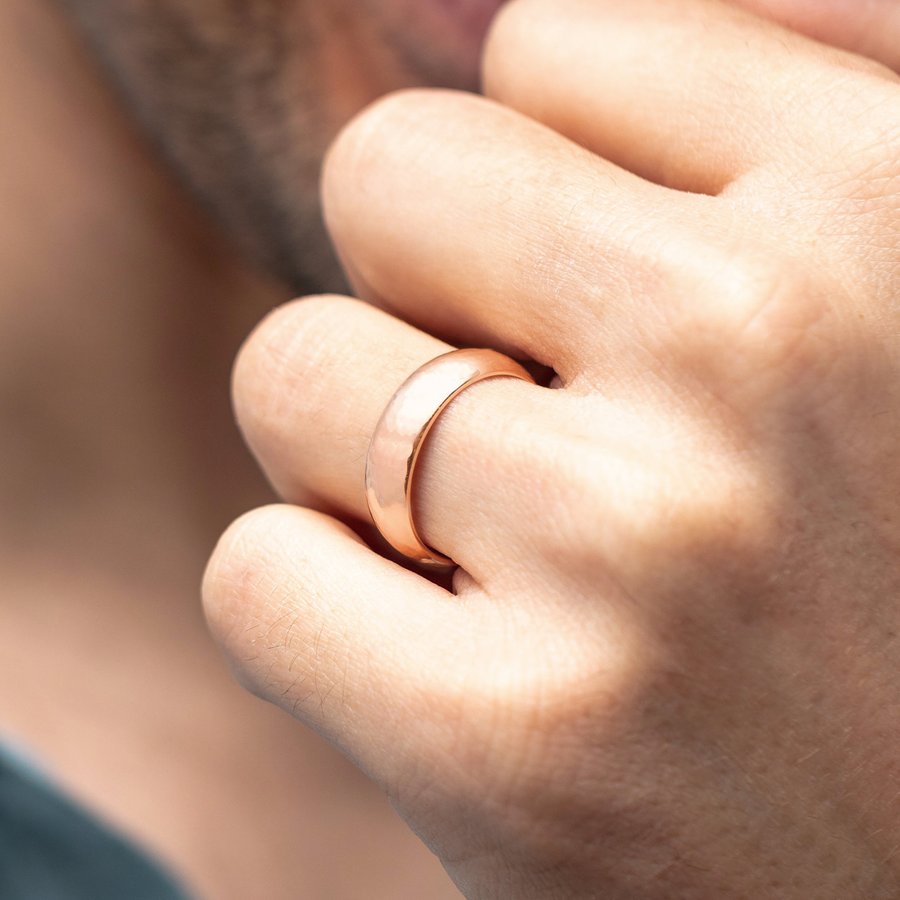
It is well-known that married couples wear a wedding band. In some countries (such as the U.S.) the wedding band is consistently worn on the left hand, but in others and some traditions the right hand is conventional (see the relevant background for a list - I am not sure which finger is used by country). Purer gold scratches more easily and is more expensive, and platinum scratches even more easily (but differently, apparently it forms a nice patina finish) and is even more expensive. Note that a wedding band is distinct from an engagement ring, which in my experience is usually slimmer with a diamond. It's worth reading a lot about this entry because it occurs with very high frequency.
Claddagh Rings -> Relationship Status
Source: @jenn
Confidence: Low-Mid
Relevant background: https://en.wikipedia.org/wiki/Claddagh_ring#Usage_and_symbolism

learned about this while jewelry shopping recently; it's a ring that looks like a pair of hands holding a heart. it's an irish thing, the finger you wear it on and whether or not it's inverted indicates your relationship status.
Questioned by step17, causing me to lower the confidence level:
...I saw the claddagh ring and felt compelled to say that it might not indicate relationship status. Yes, that is a possible reason as it is my understanding that that was part of the original popular use for the design. However, I wouldn't necessarily say that is "mid" confidence level. Some years ago the claddagh was a very popular ring and lots of girls were wearing it (at least where I lived), regardless of their ethnic background/religion, regardless of their age (and therefore relationship status as very young girls would wear them too). You would also see the design on earrings and necklaces. I don't see it as often nowadays but because of that experience I wouldn't make any assumptions about a person if I saw one wearing it.
Iron Ring -> Canadian Engineer
Source: @jenn
Confidence level: Mid
Relevant background: https://en.wikipedia.org/wiki/Iron_Ring

In Canada, engineers wear an iron ring on the little finger of their working hand, made from the remains of a bridge that collapsed catastrophically. a decent number of my engineer friends wear the ring.
-Jenn
Apparently not all engineers actually wear their rings, and these are only conferred to undergraduates.
Black Ring on Middle Finger of Right Hand -> Asexual
Source: Ana
Confidence: Mid, not confirmed
Background: https://en.wikipedia.org/wiki/LGBT_symbols

Apparently this is called an Ace ring.
Fingertip Marks -> String Instruments
Source: Ana
Confidence: Mid
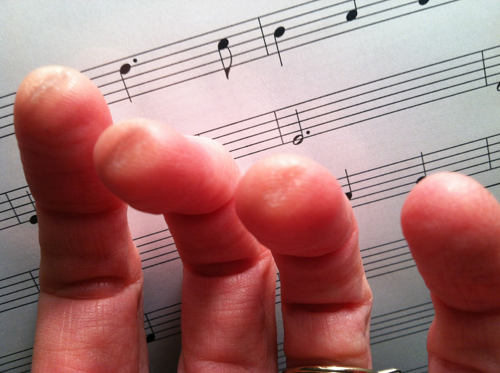
@Ms. Haze says this doesn't usually happen under a normal level of practice, and my friend Gautier confirms that it can happen. Because this is consistent with the abduction I've claimed (though not its inverse implication) I've increases the confidence level from Low to Mid.
Also, according to @ndlxs:
More on stringed instrument players:
Callouses on left hand(fretting hand) fingertips(except the thumb). If left handed person, they may be on the right hand.
Fingernails cut short on fretting hand; for guitar players strumming/picking hand(opposite of fretting hand) fingernails may be longer for those who play fingerstyle guitar style.
@Brent confirms that short fingernails on one hand can indicate guitar playing.
Fingertip discoloration -> Smoker
Source: nicbeans311
Confidence: Low-Mid
Background: https://www.healthline.com/health/smoking/smoking-fingertips#what-it-looks-like
not so much now because of the increase in options and quality but years ago heavy marijuana users would have yellowish callouses on the thumb and pointer finger of their dominant hand. this is from breaking up the weed to evenly place into the rolling papers or blunt. the marks were also exacerbated by then smoking roaches down to the very last bit without a clip or holder.
Except for anecdotal claims, I haven't been able to verify this as a sign of marijuana use specifically. However, it seems to be well-established that yellow-brown stains on thumb, index, and middle finger can result from cigarette smoking, and I certainly wouldn't be surprised if weed caused similar effects.
Slide bite -> Firing a Handgun (probably a Glock)
Source: nicbeans311
Confidence: Low-Mid
Background: https://www.nrafamily.org/content/how-to-avoid-slide-bite/ A little more research indicates that guys with big hands using a glock often have trouble with this, so it may not be easy to avoid with good technique: https://www.reddit.com/r/Glocks/comments/m6x3h7/how_do_you_guys_deal_with_slide_bite/
firing certain weapons can leave marks on a person's hand. from slide bite from glocks to garand thumb from the m1 garand. there are also forearm marks from archery if you're not wearing an arm guard.
a person also walks differently when wearing a weapon, their arm usually accommodates the space. a leather belt can show wear in the area where a badge might be repetitively attached and detached.
I've only fired a handgun on a few occasions - this never happened to me despite having terrible form, but that doesn't say much one way or the other.
Garand Thumb -> Firing an M1 Garand
Source: nicbeans311
Confidence: Low [SPECULATIVE]
Background: https://onwardresearch.com/garand-thumb/
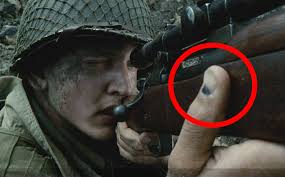
Note: The image above is NOT reliable, it's pulled from a movie. I haven't been able to find a useful confirmed image of garand thumb in real life (though this one is speculated to be real here). Please provide one if you have it, or comment on whether this one is realistic!
firing certain weapons can leave marks on a person's hand. from slide bite from glocks to garand thumb from the m1 garand. there are also forearm marks from archery if you're not wearing an arm guard.
a person also walks differently when wearing a weapon, their arm usually accommodates the space. a leather belt can show wear in the area where a badge might be repetitively attached and detached.
Awkward Gait (+ details) -> Concealed Handgun
Source: nicbeans311
Confidence: Mid
Background: For a long list of signs indicating a concealed weapon, see https://coffeeordie.com/police-concealed-firearm-spot. For a scientific study validating changes to gait, see https://www.researchgate.net/publication/329928862_Human_Gait_Indicators_of_Carrying_a_Concealed_Firearm_A_Skeletal_Tracking_and_Data_Mining_Approach
a person also walks differently when wearing a weapon, their arm usually accommodates the space. a leather belt can show wear in the area where a badge might be repetitively attached and detached.
The first link contains a lot of helpful info from a police office (Sgt. Josh Cole). There is so much useful content that instead of copying it here I strongly suggest reading the entire thing yourself. The second is more technical, but seems to be saying that a person concealing a handgun at their right hip holds their right arm further from the body and higher (though Sgt. Cole suggests they may stabilize the gun by placing a hand on it, particularly when moving quickly) and their left arm closer and lower (not sure why, perhaps a side effect). Also, the right leg is extended a closer to the body (Sgt. Cole suggests shorter steps with the right leg - I have no idea if this is consistent, perhaps someone with knowledge of human anatomy can pitch in).
Birkin Bag -> Wealthy and Status Obsessed
Source: Gennie
Confidence: Mid-High
Background: https://www.hermes.com/us/en/content/106191-birkin/
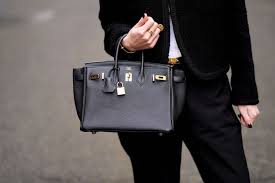
It's impossible to just buy this bag from Hermes, you have to buy other items from them and play status games until they offer you the opportunity to buy a (specific) Birkin. If you say no you might not get another chance. Also, some Birkin's are "better" than others. Typically they seem to run in the tens of thousands.
In general, it may be worth familiarizing yourself with the major high fashion brands. Though its certainly possible to waste too much time obsessing over these things, the leading "Fashion Houses" don't seem to change very frequently and are a clear sign of either wealth or the desire to appear wealthy.
Burberry Pattern -> Wealthy
Source: Gennie
Confidence: Mid
Background: https://us.burberry.com/womens-bags/?language=en&utm_source=google&utm_medium=CPC&utm_channel=psr&utm_campaignid=21118091712&gad_source=1&gclid=CjwKCAjw4ri0BhAvEiwA8oo6F-XH-TR9WYq6Ws79glieBmssvF1ojg_M7Fe7FDM_WVZqe5a99Qpq-hoCinsQAvD_BwE&gclsrc=aw.ds
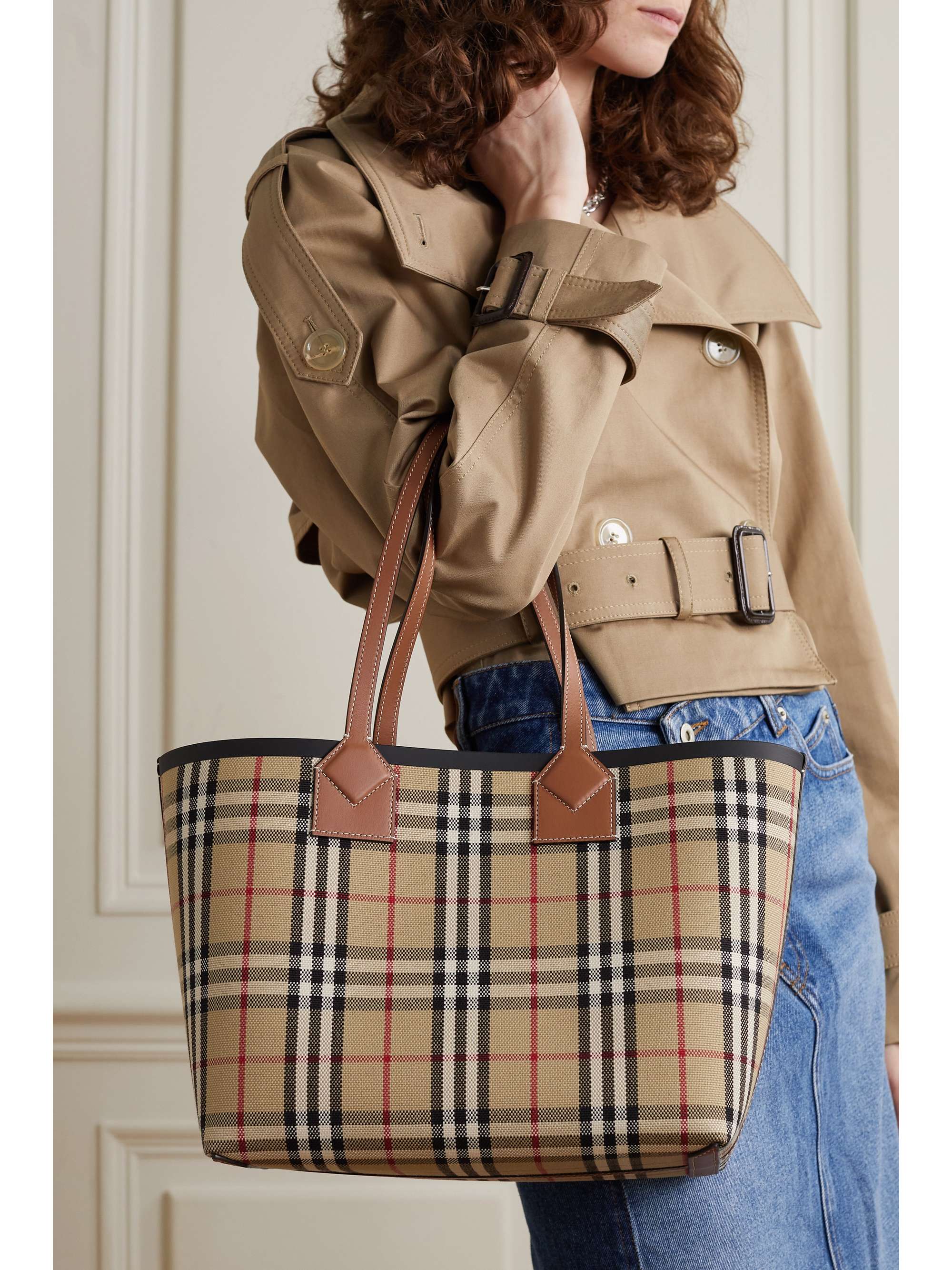
See the pattern on the bag. It appears on various items, which can be expected to run in the low thousands. A particularly obvious Burberry bag is framed as a blatant status symbol in Succession, as contrasted with the more "tasteful" aesthetic of "stealth wealth".
Flagging -> Gay (and, uh... details)
Source: @Ms. Haze
Confidence: Mid
Background: https://en.wikipedia.org/wiki/Handkerchief_code

In-line with lace code is flagging, which has also mostly fallen out of use recently, and is not really done by gay youth these days, but you'll still sometimes see it with older folks. Notably, to my knowledge, it has somewhat less geographic variation in colors than the lace code stuff does (though there still is some).
-Ms. Haze
Personally I don't recommend clicking through that link too much, more details than one would want unless part of the subculture. Still, interesting to know all these handkerchiefs actually mean something instead of just being pretty.
Chalk on Clothes -> Climber (or sometimes Weight Lifter)
Source: Me (Cole Wyeth)
Confidence: Mid
Background: https://www.reddit.com/r/climbergirls/comments/1bakffd/is_this_an_excessive_amount_of_chalk_on_my/

Serious climbers typically use chalk to improve their grip for both indoor and outdoor climbing. I don't use it much, but when I do it tends to get all over my clothes (and hands of course, but I'll wash it off before leaving the gym). Of course weight lifters also use chalk sometimes - this is an alternative cause, but I weakly suspect its less likely for a weight lifter to get totally covered.
Climbers will also have relatively short fingernails (and probably also toenails because climbing shoes are tight). New climbers get callouses but this doesn't happen much to me anymore. Neither of these get their own entry because they could imply many other things.
Red Soled Heels -> Upper Class / Elite
Source: Gennie
Confidence: Mid
Background: https://us.christianlouboutin.com/us_en/red-sole
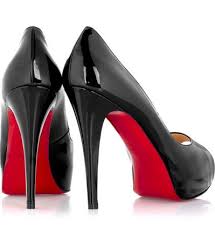
Heels with a red sole are likely either a Louboutin or an imitation. This type of shoe costs somewhere in the high hundreds to low thousands. While this isn't actually unattainable for the middle class, in my experience a Louboutin is only known as a status symbol among the upper class. These shoes once had an association with prostitution so may be too risque for "old money" families etc.
As an interesting note, Lydia wears Louboutins in Breaking Bad, symbolizing her concealed ruthlessness and responsibility for bloodshed.
Calls a Drinking Fountain a "Bubbler" + American -> From Wisconsin
Source: @Novy O'Connell
Confidence: Low-Mid
Background: https://www.google.com/url?sa=i&url=https%3A%2F%2Fwww.reddit.com%2Fr%2FMapPorn%2Fcomments%2F9010e8%2Fwhat_do_you_call_that_thing_you_drink_water_from%2F&psig=AOvVaw29qVjSsJfLC6V_DU-fBKgg&ust=1720464567162000&source=images&cd=vfe&opi=89978449&ved=0CBEQjRxqFwoTCMjw0IzMlYcDFQAAAAAdAAAAABAE

If someone uses the word "bubbler" instead of "water fountain" or "drinking fountain", they are likely from Milwaukee or at least Wisconsin. I say this as a Wisconsinite who knows that many people outside of the state have not heard this way of referring to a water fountain. "Water fountain" and "drinking fountain" also have regional differences, but they both have widespread use across the United States, so this wouldn't clue you into much. I've heard that Eastern Massachusetts also uses this terminology, but I have not been there so I cannot say from personal experience.
Also:
Along the same lines, if someone refers to a casserole as a "hot dish" (and especially if they have strong feelings about which term is correct) they are likely from Minnesota or North Dakota.
According to @Freyja:
I call a water fountain a bubbler and I’m from Australia
So this rule is only reliable within the U.S. This comment also caused me to lower the confidence. I think linguistic clues have a low bitrate and are not very reliable, but if you want more like this, see "Speaking American."
Takeaways
Generally, the easiest inference rules to find apply to people who are actively signaling something. For instance, designer brands are intended to signal status to those in the know (sometimes subtly), tattoos can intentionally convey messages (often about past trauma or to raise awareness for issues), and LGBTQ+ communities have historically used various codes to communicate membership. One might presume that other communities are still in "stealth mode" and haven't shared their codes to this list - particularly if membership is highly taboo or if they have little intersection with the rationalist community. For instance, I don't know how neo-Nazi's currently identify each other (lace code is regional and outdated). Also, it is my impression that some people put minimal or zero effort into signaling unusual attributes through their appearance, which may mean they tend to be "inherently" inscrutable without access to superhuman perceptive abilities and fluid intelligence.
I am very interested in more sophisticated rules relying on gestures, posture, gait, or eye movement to conclude interesting facts, assuming they are reliable.
- ^
A motif is basically a symbol that is reused in different forms across a line / collection.
Discuss

